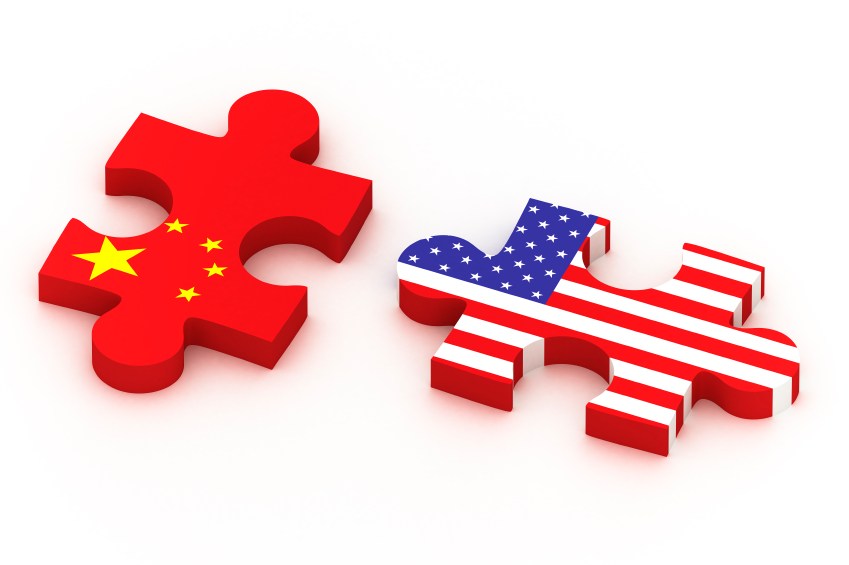Co-authored with Barbara Finamore, NRDC’s China Program Director
The Copenhagen climate summit is coming to its moment of truth, and all eyes will be on the United States and China. Together these two countries account for 42 percent of world CO2 emissions. One is responsible for the largest share of past emissions; the other for the largest share of future emissions. Other nations, both developed and developing, are looking to them for leadership. If China and the U.S. play their parts, we can forge the global consensus needed to prevent catastrophic climate change.
Both the U.S. and China deserve credit for making significant moves this year to tackle the threat of global warming. But to unlock the global agreement here in Copenhagen, each needs to take another step. And these steps offer each country opportunity and advantage.
In the past year, both countries have made unprecedented investments in green energy and clean technology. China has enacted incentives for wind power, solar panels, efficient appliances, and efficient factories, reaching scales that are driving down clean energy prices worldwide. After years of denial, the U.S. has embraced the science and started curbing CO2 under its Clean Air Act. At the same time, the president is working with Congress on new legislation that will cap and cut U.S. emissions every year, reaching an 83 percent reduction by 2050, and expanding standards and incentives for energy efficiency and renewable power.
 In November, both countries offered significant emission reduction targets on the eve of the summit. Naturally, their targets are expressed in different forms and reflect each country’s different circumstances. The U.S. proposes to cap and cuts its greenhouse gas emissions in the range of 17 percent below 2005 levels by 2020, the target in legislation that has passed the U.S. House of Representatives. China proposes to slow its emissions growth by improving its carbon intensity (energy-related CO2 emissions divided by GDP) by 40-45 percent below 2005 levels by 2020. China has also committed to produce 15 percent of its primary energy from non-fossil energy sources by 2020, and to reforest 100 million acres.
In November, both countries offered significant emission reduction targets on the eve of the summit. Naturally, their targets are expressed in different forms and reflect each country’s different circumstances. The U.S. proposes to cap and cuts its greenhouse gas emissions in the range of 17 percent below 2005 levels by 2020, the target in legislation that has passed the U.S. House of Representatives. China proposes to slow its emissions growth by improving its carbon intensity (energy-related CO2 emissions divided by GDP) by 40-45 percent below 2005 levels by 2020. China has also committed to produce 15 percent of its primary energy from non-fossil energy sources by 2020, and to reforest 100 million acres.
But the U.S. and China each need to do one more thing to give one another, and rest of the world, the confidence to move forward in Copenhagen:
U.S. leadership to help the world’s most vulnerable. The U.S. has the opportunity to help the world’s poorest and most vulnerable people survive the impacts of global warming and to help countries protect their endangered tropical forests. The U.S. has committed to pay its share of a $30 billion “fast start” fund to last through 2012. But to lead in Copenhagen, the U.S. needs to back even larger investments to meet these core needs for the longer-term — 2015 or 2020. The U.S. also needs to subject these commitments to reporting and review.
- There are those in the U.S. who oppose helping poor and vulnerable people abroad, especially given America’s own economic difficulties. But the U.S. also has a long tradition of helping others, and America’s emissions have impacts that confer responsibilities. These investments will pay big returns — enhancing America’s security, opening opportunities for American businesses and workers, and restoring our standing in the world community.
Chinese leadership in transparency and performance. China has the opportunity to enhance its standing as a responsible world leader by building global confidence in the implementation of its carbon reduction goals. China is making its target domestically enforceable and has been building effective institutions for implementing its energy and climate targets. China has pledged to report its performance to the world, and China and the U.S. are already cooperating bilaterally to enhance China’s emission inventory systems. But China needs to provide for enhanced transparency and some form of independent review to create greater global confidence that it is making steady progress towards meeting its target.
- There are those in China who oppose taking further steps to share and review relevant data. It is important to assure them that review or consultation does not require intrusive measures, such as factory-level inspections. But China’s commitment to enhanced transparency will bring it greater recognition for the significant steps it is already taking to mitigate its emissions, and will also yield dividends in other areas of economic cooperation and trade.
- Some may fear that greater openness will make China more vulnerable to trade measures proposed in U.S. climate legislation. Actually, it would have the opposite effect. The better China demonstrates that it is meeting its targets, the less its exposure, because the U.S. bills provide that trade measures will not apply to any country that is doing its part in the fight against global warming.
These two moves by the U.S. and China could unlock the Copenhagen chess game. In the final days of hard bargaining, China can use movement on transparency to leverage a U.S. commitment to more financial resources for the world’s most vulnerable, for forest protection, and clean energy deployment. By leveraging that commitment from the U.S., China will earn even higher standing in the eyes of both developed and developing nation partners.
So much rests on the choices these two giants make in the next three days.
Spread the news on what the føck is going on in Copenhagen with friends via email, Facebook, Twitter, or smoke signals.



